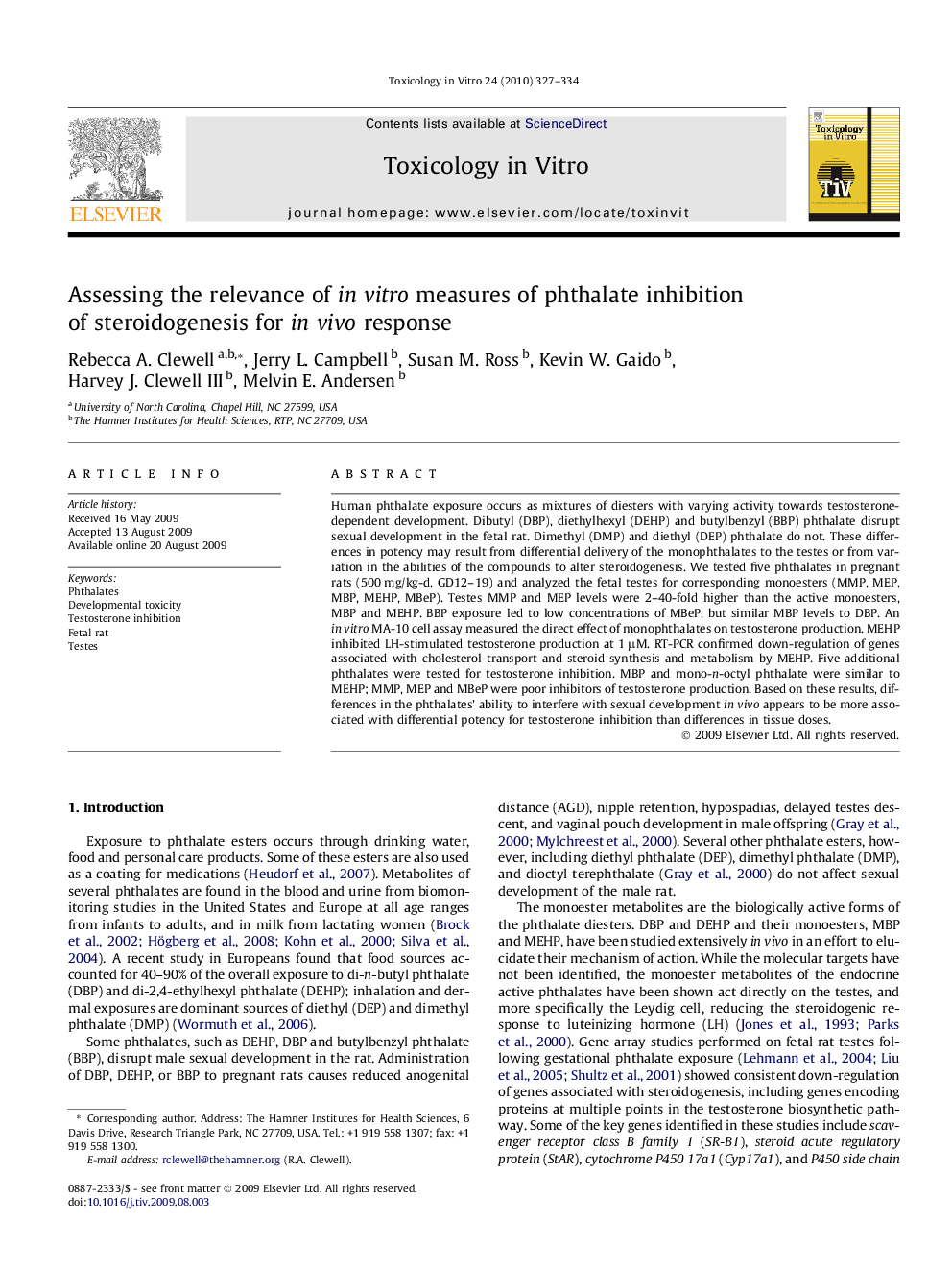| Article ID | Journal | Published Year | Pages | File Type |
|---|---|---|---|---|
| 2603560 | Toxicology in Vitro | 2010 | 8 Pages |
Human phthalate exposure occurs as mixtures of diesters with varying activity towards testosterone-dependent development. Dibutyl (DBP), diethylhexyl (DEHP) and butylbenzyl (BBP) phthalate disrupt sexual development in the fetal rat. Dimethyl (DMP) and diethyl (DEP) phthalate do not. These differences in potency may result from differential delivery of the monophthalates to the testes or from variation in the abilities of the compounds to alter steroidogenesis. We tested five phthalates in pregnant rats (500 mg/kg-d, GD12–19) and analyzed the fetal testes for corresponding monoesters (MMP, MEP, MBP, MEHP, MBeP). Testes MMP and MEP levels were 2–40-fold higher than the active monoesters, MBP and MEHP. BBP exposure led to low concentrations of MBeP, but similar MBP levels to DBP. An in vitro MA-10 cell assay measured the direct effect of monophthalates on testosterone production. MEHP inhibited LH-stimulated testosterone production at 1 μM. RT-PCR confirmed down-regulation of genes associated with cholesterol transport and steroid synthesis and metabolism by MEHP. Five additional phthalates were tested for testosterone inhibition. MBP and mono-n-octyl phthalate were similar to MEHP; MMP, MEP and MBeP were poor inhibitors of testosterone production. Based on these results, differences in the phthalates’ ability to interfere with sexual development in vivo appears to be more associated with differential potency for testosterone inhibition than differences in tissue doses.
